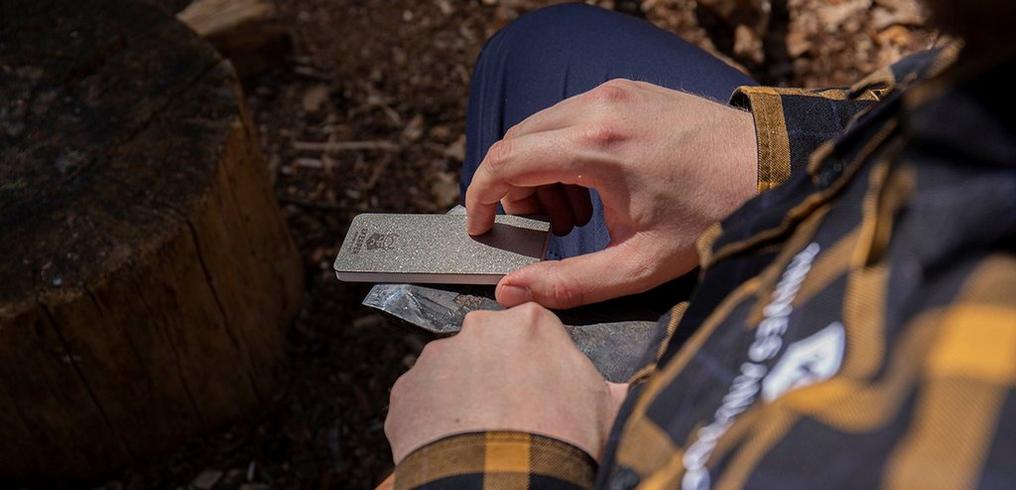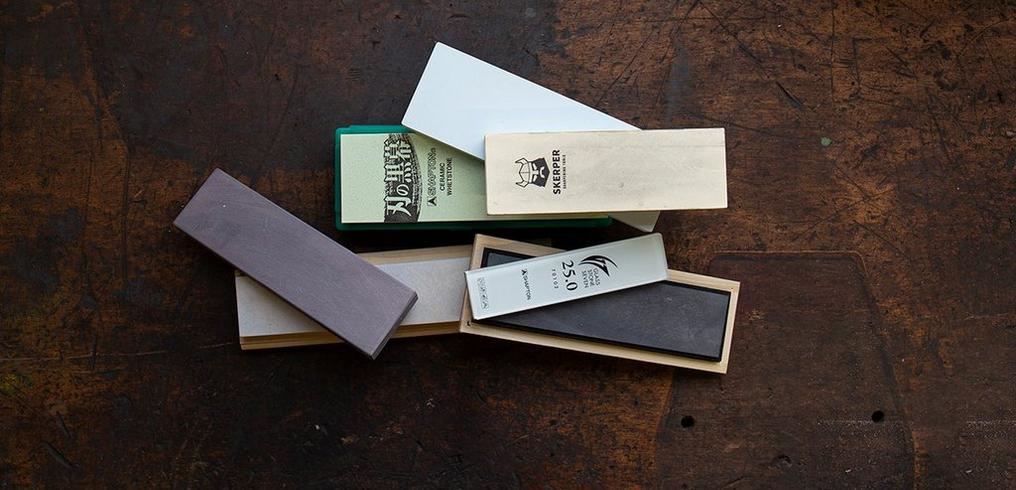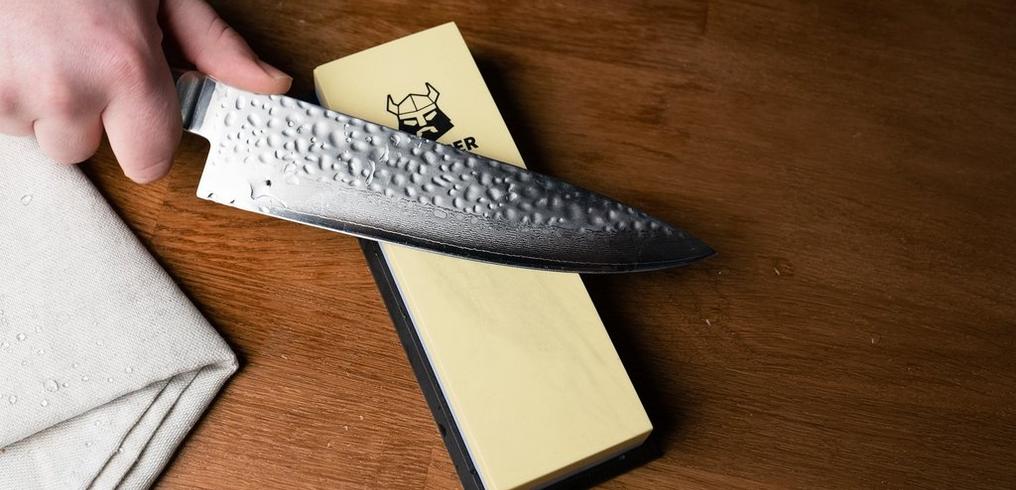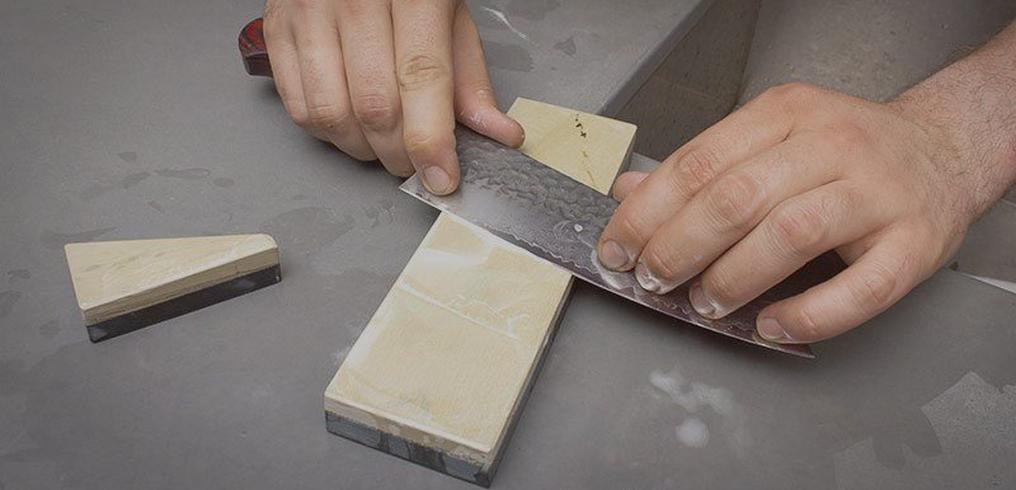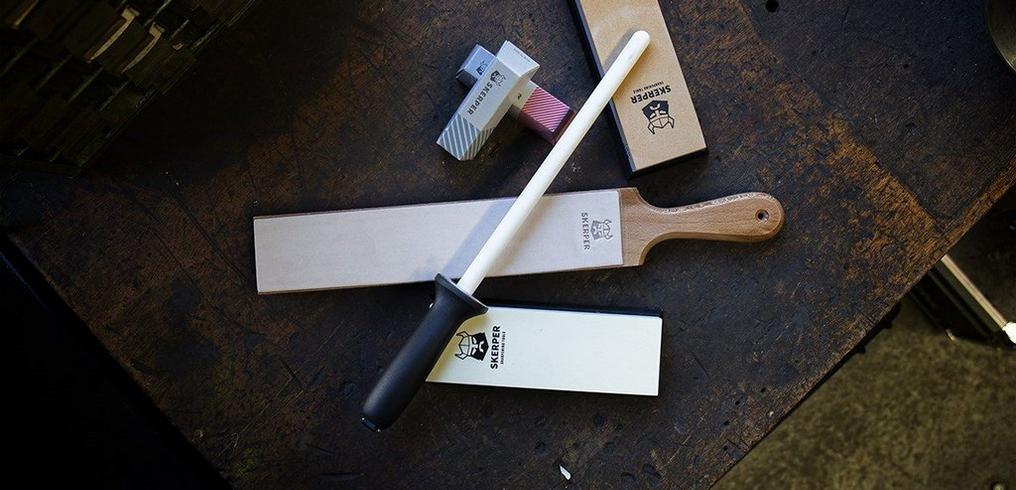What is the best pull-through knife sharpener?
The use of a pull-through knife sharpener is perhaps the easiest way to sharpen your knives. However, if you want to purchase the right sharpener you need to know what to pay attention to. Because even though almost all pull-through sharpeners are almost identical, there are still differences between the sharpeners from different brands.
How do you use a pull-through knife sharpener?
You sharpen your knife sets by pulling your knives through one or multiple slots. You place the heel of a knife in the slot and pull it towards you. You repeat this - depending on the abrasive used - about ten times, with incredibly fast results.
The sharpening angle is almost always set in stone. This is of course a big advantage because as a result you cannot go wrong here. Other sharpening methods, such as sharpening on sharpening stones, with a sharpening steel or even a sharpening system or machine offer you a lot less certainty.
Different professional knife sharpeners
As said before most pull-through sharpeners look alike. You could, however, find - sometimes subtle - differences between them. One of the most important differences is already discussed before, namely the sharpening angle. For almost all knife sharpeners the sharpening angle is set in stone. This means that you can only sharpen your knives from a predetermined angle. As such you need to think about which knives you wish to sharpen with it and which angle these knives need.
However, there are exceptions. The Vulkanus knife sharpeners, for instance, are enhanced with a variable sharpening angle which is determined by the amount of pressure you apply on the rods. As such you can vary between a sharpening angle of roughly 12 to 20 degrees. Another advantage is that you can also use the Vulkanus sharpeners to sharpen knives with a one-sided grind such as a bread knife. A relatively unique quality, especially considering the fact you don't often come across sharpeners for serrated knives. The function of the Vulkanus sharpener is highlighted in the video below.
Abrasive: ceramic or diamond?
Another important distinction between the various pull-through knife sharpeners is the abrasive used. Most pull-through sharpeners are enhanced with ceramic sharpening wheels/stones, others have a diamond coating and some work with carbide. We noticed that diamond sharpeners work very fast, but are also very aggressive. If you want to have sharp knives in no time at all, diamond is a great option. However, if you prefer a polished edge it is best if you choose a ceramic version.
Number of sharpening stages
The extent to which you can polish your knives with a pull-through sharpener depends on the number of sharpening stages. If the sharpener has been enhanced with only one slot it is usually only suited to sharpen relatively sharp knives. Do you wish to sharpen (relatively) blunt knives with a pull-through sharpener? If so you need at least two, ideally even three sharpening stages. You use the coarse grain to restore the shape of the edge, after which you use one or two finer stones to polish the edge.
Despite the fact that most sharpeners look alike the differences can be found in the results. The Vulkanus sharpener, for instance, can leave you with a sharpness that is similar to the results achieved with more advanced sharpening methods. It is something we also experienced during our pull-through knife sharpener test which we carried out a couple of years ago. However, for most budget sharpeners this doesn't apply. As such you should never let the price mislead you: a really good sharpener might cost you a little more, but it will start paying for itself in no time!

